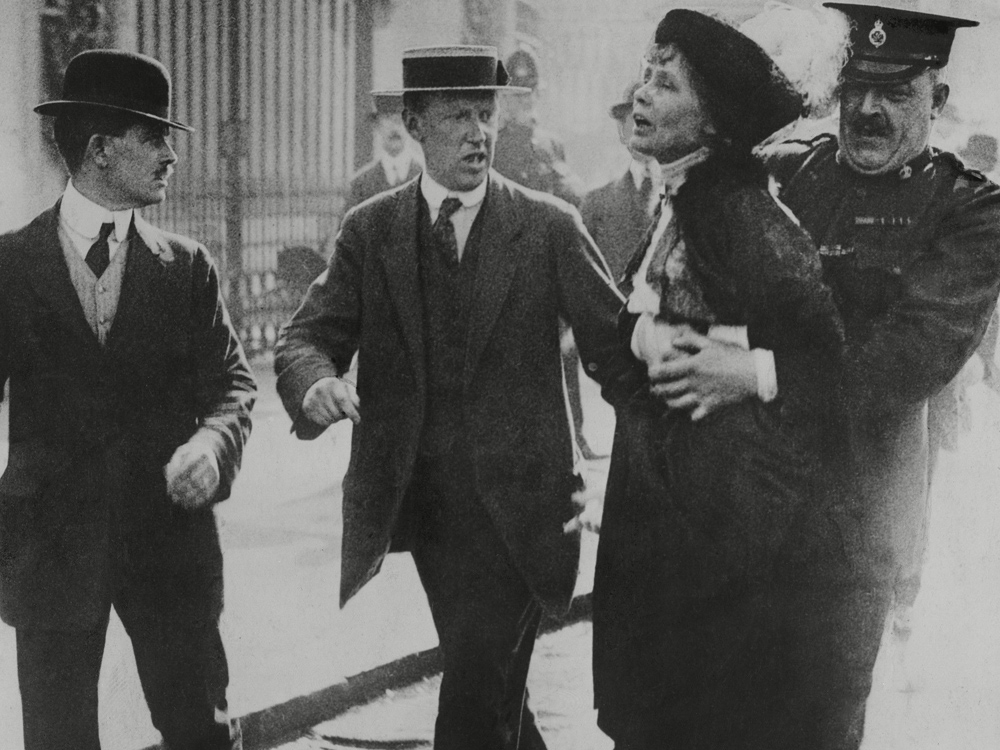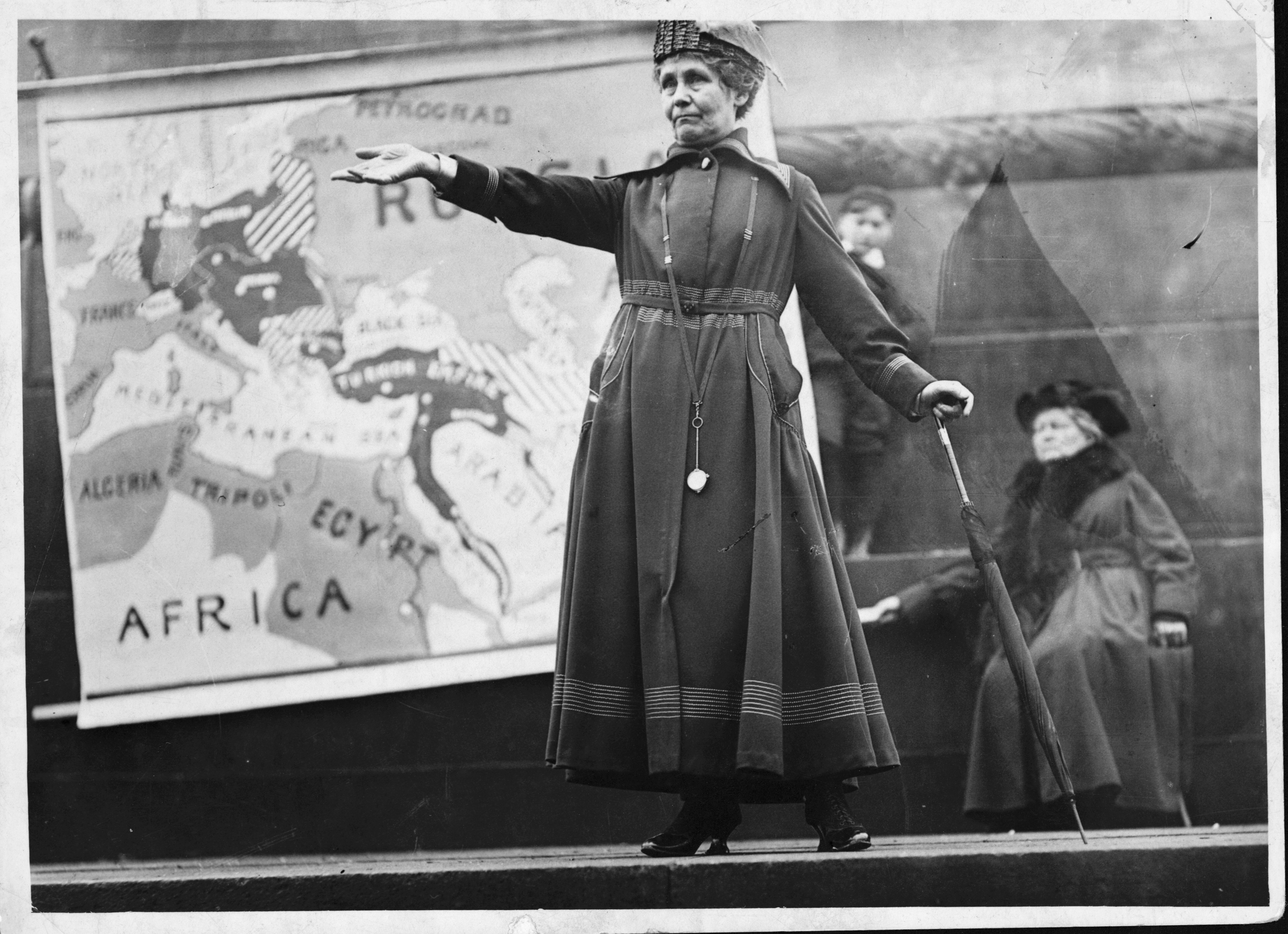How to be a suffragette in the 21st century...
A hundred years on since some women were first given the right to vote, Coronation Street actress Nicola Thorp speaks about her campaign to end workplace sexism and discrimination

A hundred years on since some women were first given the right to vote, Coronation Street actress Nicola Thorp speaks about her campaign to end workplace sexism and discrimination
Words by Nicola Thorp
When Emmeline Pankhurst adopted the phrase ‘Deeds Not Words’ as the motto for her suffragette movement, it took a further 15 years until the first woman was granted a vote in the UK. In her long fight for women’s equality, Emmeline suffered disappointment alongside each success of her campaign. Politicians fed her false promises, she was lied to and treated as though her voice as an individual; as a woman, had little impact.
But she instigated a movement. A movement of women who, together, could no longer be ignored by the public, the media or the government.
One hundred years on, the House of Commons have provided us with a tool that encourages the public to exercise our democratic right. To bring issues to the attention of politicians and the opportunity to have those issues debated in Parliament. The online petition.
Many people groan at the thought of ‘yet another online petition’, but what makes the Government and Parliament petition system different is that if you collect enough signatures, you are guaranteed a response from the Government. The system is easy to use, and they assist you in making your petition clear, and suggest ways in which you can get it seen by the as many people as possible. Then it is published on their website. It’s easy to share, simple to navigate, and the people who sign it will be kept up to date with the progress of the petition via email. And the topics up for debate are extensive. Past petitions have covered issues ranging from Trump to Brexit, animal fur to sky lanterns.
I started my own petition when I was fired from a job as a receptionist for refusing to wear high heels in the office. I turned up to work in a pair of smart, but flat, shoes and I was fired on the spot, and sent home without pay. I was baffled as to how and why this sort of practice was happening in this day and age in what I deemed to be a progressive society. I discovered a grey area in our legal system which allowed employers to get away with this sort of behaviour. I wanted to bring that to an end. So, like anybody with a burning question in the 21st Century…I googled it. ‘How do you change a law?’ I asked. Google’s first response was a link to the Government and Parliament petition website. And the rest, as they say, is history.
Celebrity news, beauty, fashion advice, and fascinating features, delivered straight to your inbox!

All petitions last 6 months, so you have a goal in sight and a decent amount of time in which to achieve it. I found that because of the legitimacy of using the Government and Parliament petition, people felt more inclined to sign it as they knew that there was an opportunity for action at the end of it. An action, not just a promise. Deeds, not just words.
After 10,000 signatures, the Government will give a response to the action. If you manage to gain over 100,000 signatures, then the topic will be considered for debate in Parliament. After my petition went above the 100,000 mark, an inquiry was set up by the Petitions and Women and Equalities select committees to assess how widespread workplace discrimination was with regards to dress codes. Their findings confirmed what I believed; that further action was needed to protect women in the workplace. The issue was then debated in Parliament and the Government agreed to publish a set of guidelines to make it clear to employers that the kind of discrimination I had faced was illegal.
I ended up with 152,000 signatures of support for my petition, and although the Government rejected my suggestion of a law change, they agreed to distribute a set of guidelines for employers and employees across the country. I’m sad today that, one year on, the Government are yet to deliver on this promise, stating that the guidelines will be published ‘in due course’. The Government action is yet to be carried out, but the social change is already happening, and that is all thanks to the success of the petition.
The media attention covering my case went worldwide, and as a result, women from China, Canada and Australia started their own movements to address workplace sexism and discrimination. It was discussed on talk shows, radio shows, news programmes and even made front page news. Workplace discrimination was back on the political agenda. Companies changed their policies overnight, women who were previously unaware of their rights as employees were standing up against employers and questioning the discrimination they were facing. The select committees’ inquiry confirmed what we already knew, that gender discrimination was very much alive and well in the UK workplace, and that change needed to be made. Despite the Government’s rejection of the petition’s demand to change the law regarding workplace dress codes, the success of the campaign could be seen across the country.
This may have been deemed a failure by some, but to me it was an overwhelming success. Real affirmative action.

It is worth reminding ourselves, particularly on the 100 year anniversary of the Representation of the People Act 1918, that, despite popular belief, this was not the year that women got the vote. It was the year that some women got the vote. The difference is vital. If the suffragettes had considered their work completed in 1918, then the only women who would be voting today would have to be married, own property and be at least 30 years old. It took a further ten years for women to gain equal voting rights to men.
We learn from history that shifting the political landscape takes a long time. Laws cannot be changed overnight, but the public conversation can be. The Government and Parliament petitions system is an invaluable tool which aids us in doing this.
The early suffrage campaigners made good use of the traditional paper petition. In fact, more than 16,000 petitions for votes for women were received by the House of Commons and House of Lords between 1866 and 1918. If only Emmeline Pankhurst had an online petition system and the powerful outreach of social media to aid her in her work. But you do. If there is a political or social issue you feel deserves the attention of Parliament, use this tool. It isn’t just there for budding politicians, or activists, or lawyers. It’s there for you.
Your voice matters. Make it heard.
The leading destination for fashion, beauty, shopping and finger-on-the-pulse views on the latest issues. Marie Claire's travel content helps you delight in discovering new destinations around the globe, offering a unique – and sometimes unchartered – travel experience. From new hotel openings to the destinations tipped to take over our travel calendars, this iconic name has it covered.